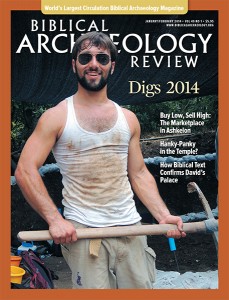Buy Low, Sell High: The Marketplace at Ashkelon

Ashkelon—an ancient city whose name comes from the same root as shekel—was indeed a city of buying and selling. If archaeologists were to design a place to examine the economy of the ancient world, they could hardly pick a better site than Ashkelon. At the end of the South Arabian overland spice routes, Ashkelon was a major city with the region’s largest Mediterranean port. Since 1985, archaeologists of the Leon Levy Expedition to Ashkelon have carefully sifted through the remains of the ancient city in search of evidence of international trade.
In the seventh century B.C.E., on which we will focus here, Ashkelon extended for more than 150 acres, with 12,000 to 15,000 people within its ramparts. To feed that number of people on the surrounding arable land was impossible given the few rural settlements within farming range of Ashkelon. Although Ashkelon was not a supersize agrarian kingdom, it was a commercial one, where trade, not agriculture, was the primary mode of sustenance.
Already a library member? Log in here.
Institution user? Log in with your IP address.

